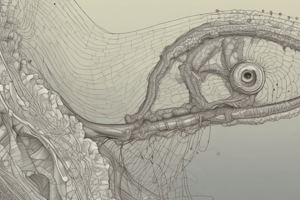Podcast
Questions and Answers
Explain asexual reproduction and provide examples of organisms that reproduce asexually.
Explain asexual reproduction and provide examples of organisms that reproduce asexually.
Asexual reproduction is a type of reproduction that does not involve the fusion of gametes or change in the number of chromosomes. Organisms that reproduce asexually include unicellular or multicellular organisms such as archaea, bacteria, plants, animals, and fungi.
What is parthenogenesis and how is it utilized in vertebrates?
What is parthenogenesis and how is it utilized in vertebrates?
Parthenogenesis is the most common form of asexual reproduction in vertebrates. It is typically used as an alternative to sexual reproduction in times when reproductive opportunities are limited. Komodo dragons and some monitor lizards can reproduce asexually through parthenogenesis.
How do offspring produced through asexual reproduction compare to their parent?
How do offspring produced through asexual reproduction compare to their parent?
Offspring produced through asexual reproduction inherit the full set of genes of their single parent and are genetically and physically similar to the parent or an exact clone of the parent.
Which organisms primarily use asexual reproduction as their form of reproduction?
Which organisms primarily use asexual reproduction as their form of reproduction?
What is the role of lateral gene transfer in the reproduction of prokaryotes?
What is the role of lateral gene transfer in the reproduction of prokaryotes?
Flashcards are hidden until you start studying




